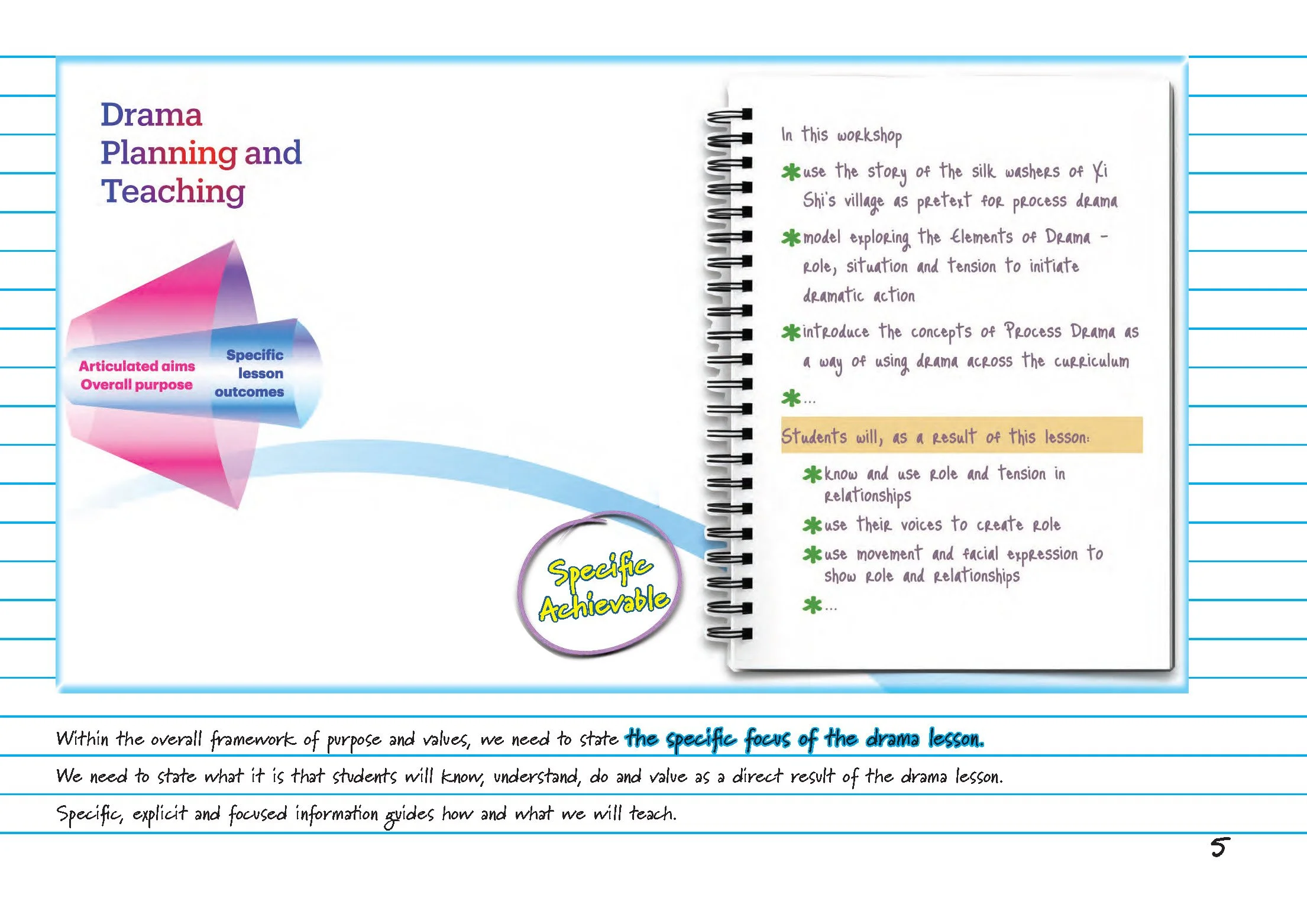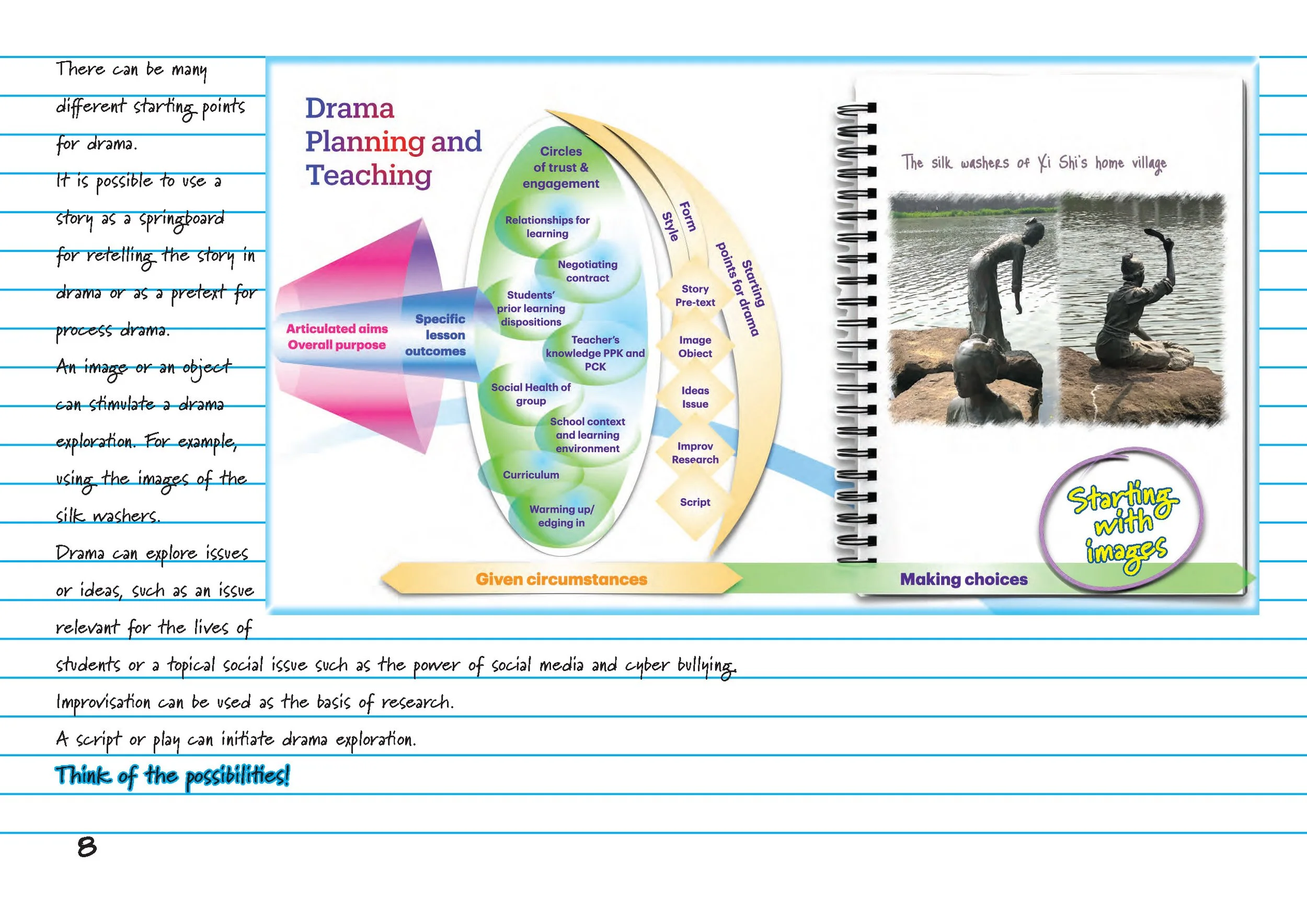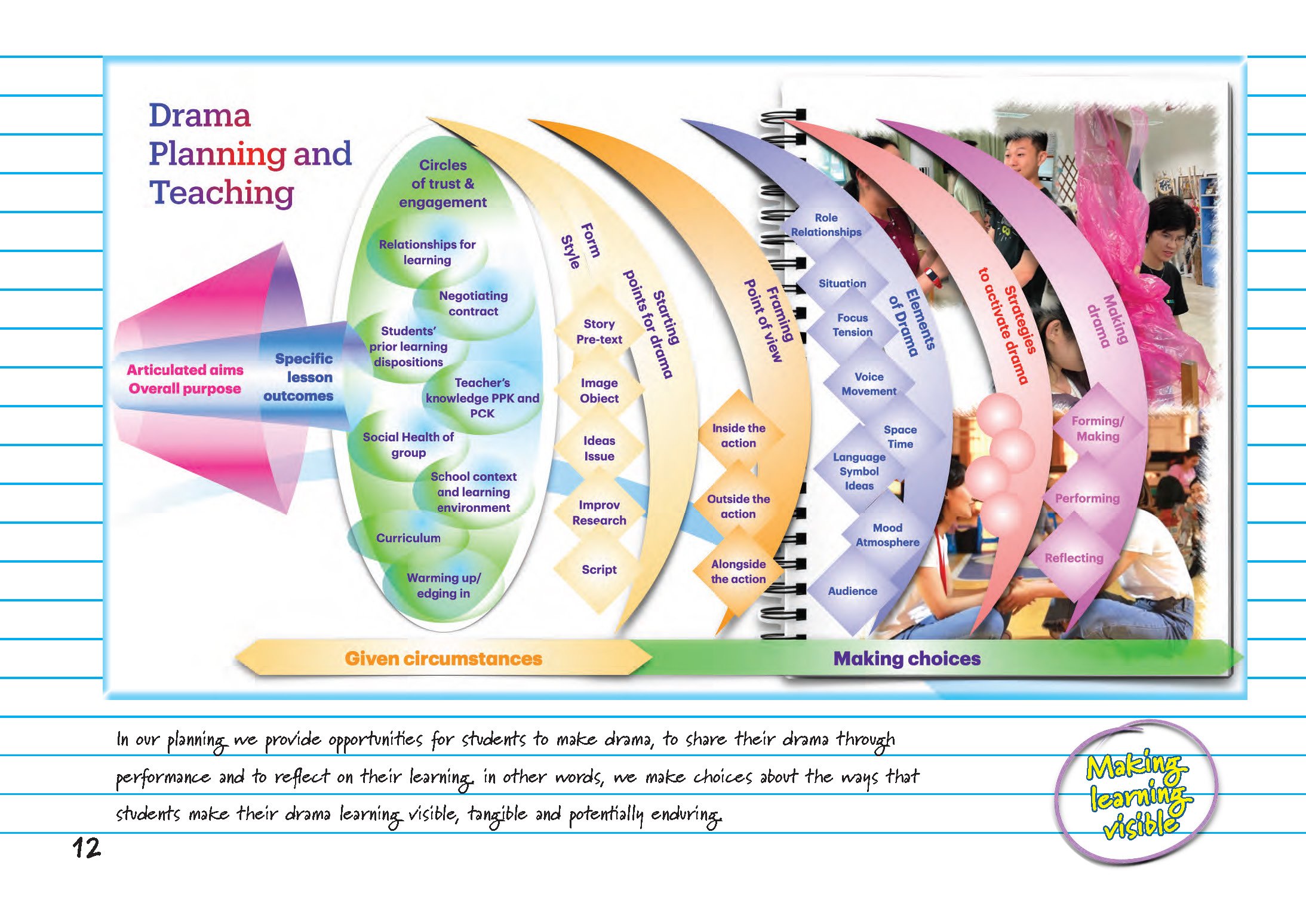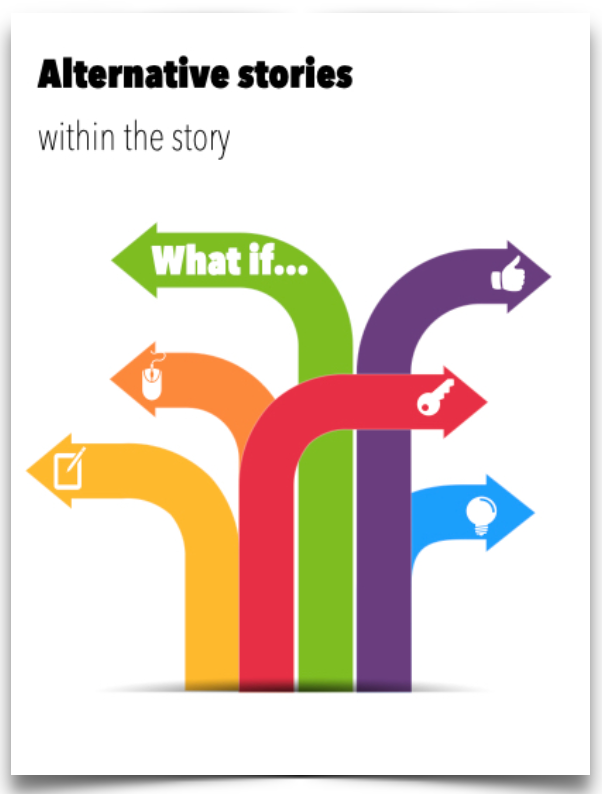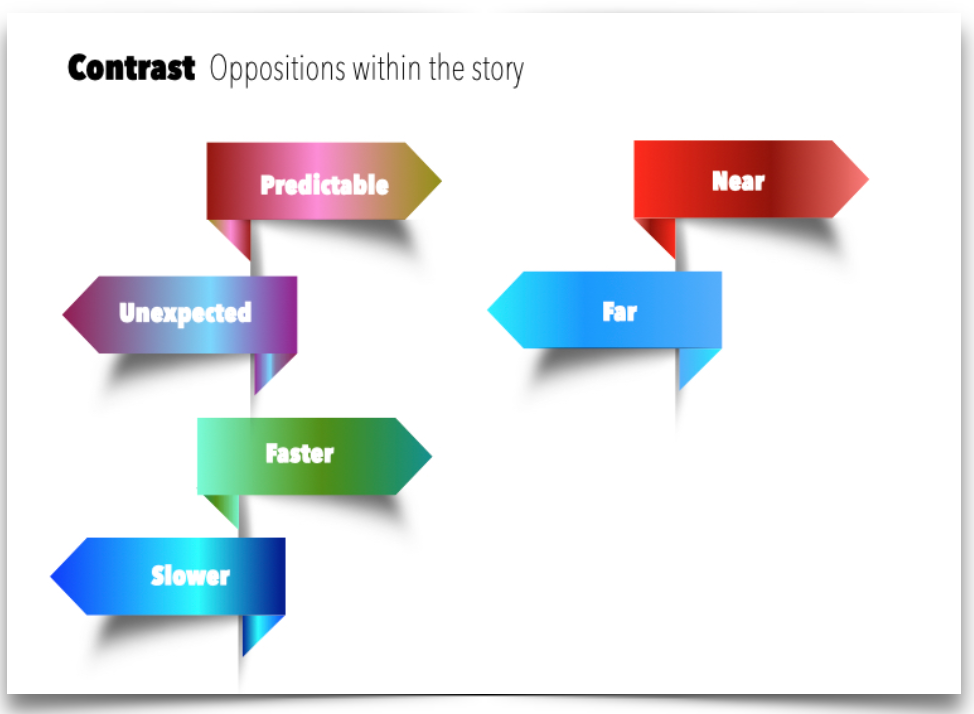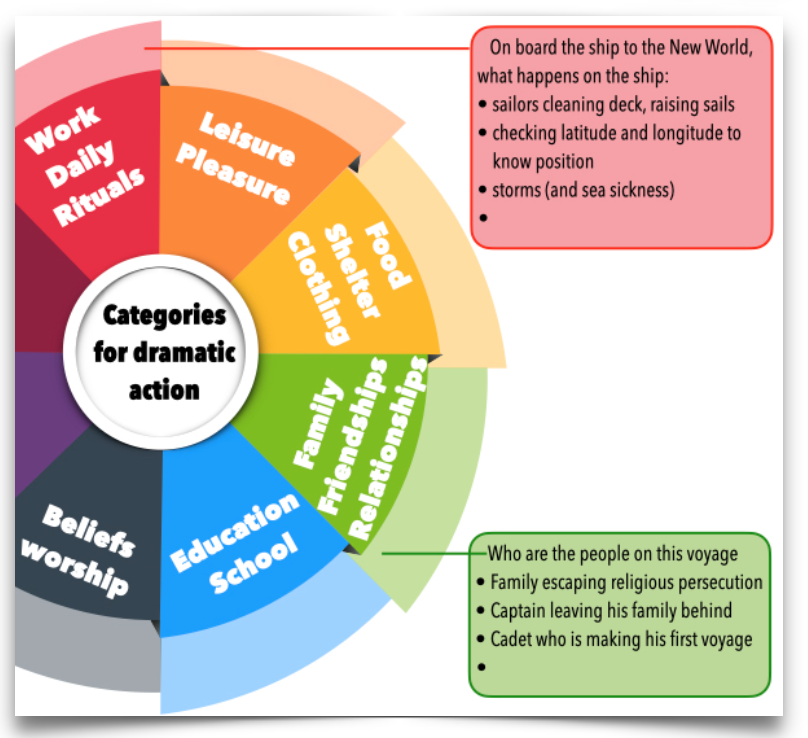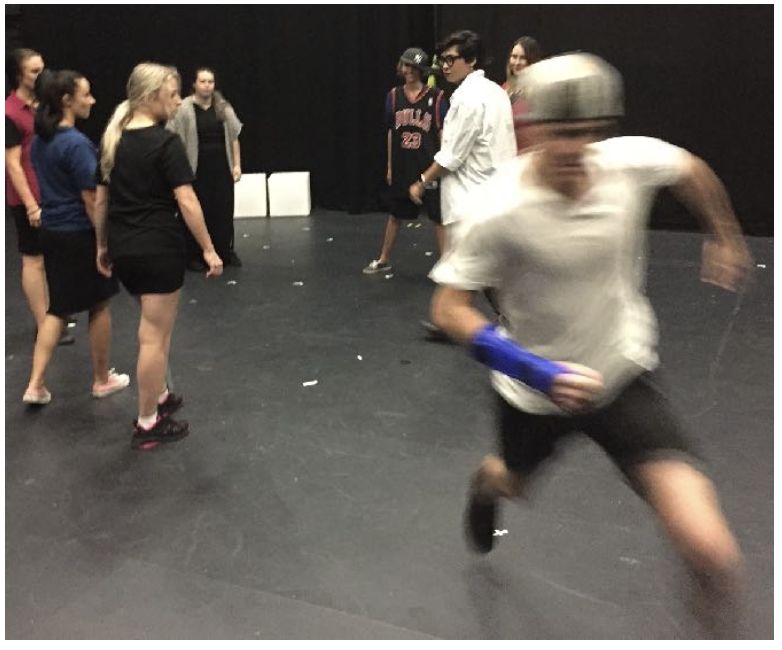Drama Thinking - Part 6
/Finding the stories for drama
The town of Littlight and its people live in a grey and lifeless community, dictated to by the Mayor, an autocratic man who fears change and difference. Mysteriously, the brick walls surrounding the town start to disappear and as they do so, light, colour, sound and eventually people start to appear through the every enlarging holes.
This is a story about one person setting of a change reaction - about celebrating difference, tolerance and not just being open-minded to those who live different lives, but being open enough to embrace and enjoy their differences.
The illustrations are simple and stylistic - quite childlike. Stark shades of grey depict the township except for one bright, colourful girl and a ladder. As the bricks disappear psychedelic colours leech through along with small differences to start with - as brightly coloured birds start to emerge. As the holes in the wall grow larger we get glimpses of different people doing different things - cooking, dancing etc with different senses being awoken but the Littlelight townsfolk. The Mayor is angry, and at first the people are frightened of something new and different but as the colours take over their community they become happy and cheerful. The vivid endpapers are filled with bright and colourful houses side by side and provide a good talking point.
A frequent question I am asked is about the stories I use in drama workshops: where do you find the stories?
I find stories for drama literally everywhere.
I am always looking for stories for drama.
You might find me in the children’s picture book section of the book store. Or, I might see something in a newspaper clipping. Or, a friend might tell me a story from local history.
For example, in the children’s section of a bookshop and found a new book by a Western Australian author, Kelly Canby, called Littlelight (2020). Immediately, I could see the situation – a town that is walled in – and the roles – the pompous mayor and the fun-loving stealer of the bricks in the wall. I could use the Drama Thinking processes described in earlier posts to generate dramatic action that can help students understand important life issues.
Another time the same bookstore I saw The Wanderer by Peter Van den Ende (2020).
At once I could see a starting activity of making paper boats and talking about them – an activity outside the frame that enables us to edge into the drama where we take on roles.
A little boat sets out to sea and begins its voyage toward home. To get there it must travel across many strange, beautiful oceanscapes, full of fantastic creatures and deadly monsters, swept by terrifying storms and sailed by mysterious ships. Can the Wanderer pick a path through all these perils to a safe harbour?
The story itself is so open ended. We could springboard from images in the book itself. Each of the images could provide an episode for a drama activity.
Or, we could invent our own adventures and places for the little paper boats to be travelling.
These sorts of picture books are so great for generating drama thinking ideas.
Generative stories are rich with potential drama.
They enable us as drama teachers to work between the
narrative threads to find the drama.
They focus on human experience that can be shared in embodied ways.
Similarly, a friend told me the story of the shipwreck off the coast of Western Australia – quite infamous for the bloody insurrection and mutiny and the terrible justice imposed on the mutineers.
what her was fascinated about was that in the party of several ships in the convey making the journey from Amsterdam to the Dutch East Indies, there were many children.
I thought about the potential for drama in this story from our shared history.
Stories don’t have to be written down or published in books.
Just as Drama reflects life, so too, all of our lives can be the source for good drama lessons.
They open doors to Process Drama activities.
With my teacher education students we worked through the Process Drama of the Batavia Children, to learn about Process Drama.
An associated question I am sometimes asked: Why do I use stories for drama?
My job as a drama teacher is to help students learn about drama - using the Elements of Drama to express and communicate ideas and feelings as well as to understand and respond to drama.
Stories are ways of embedding these important elements into packages that. Help students learn.
Of course, there are times when I plan a drama based on a concept – such as using voice dynamically to create character. Or, teaching about the important ideas of Brecht as a playwright and director that have influenced contemporary drama. So there are drama lessons that don’t necessarily start with a story. I can start with a specific lesson concept in mind. But even then, I try to find a way of bringing it to life through including part of a story.
But there is nothing to match the power of a generative story to hook and engage students. Into that story, I can embed important conceptual and practical learning.
In overview, this series of posts have focused on the ways that we as drama teachers move from a starting point – often a story – through processes of drama thinking linked with my portfolio of Drama Teaching and Learning Strategies. Through these processes, I am in a position to create a specific drama lesson plan.
My planning often looks something like this:
Excerpt from Batavia Children Process Drama Planning
Bibliography
Canby, K. (2020). Littlelight. Fremantle, Western Australia: Fremantle Press.
Peter Van den Ende. (2020). The Wanderer. San Francisco: Chronicle Books.
Drama Thinking - Part 5
/In Part 5 I share with you one further Drama Thinking process to help you move from a story to your planned drama lesson. This is a simple strategy. Think about your story in terms of Before, During and After the story.
Before During and After
Perhaps the simplest of all these drama Thinking Processes, Before, During and After looks carefully at the story.
What happened before the story starts – to the people in the story. Think about their situation, relationships and what they are thinking and feeling.
Look inside the story – what happens during the story. It is useful to look here at the narrative chain.
Finally, we can look at what happens or might happen after the story ends.
Alternative stories
Sometimes, within a story we can imagine alternatives.
We can asks ourselves what if questions.
If the original story of our travellers to a New World, their adventure begins in Europe and they venture to the Dutch East Indies.
But what if… instead of reaching their destination, their ship is wrecked on rocks on the coast of Western Australia and they must learn to live with the Aboriginal people.
Or, what if… in a huge storm, their ship is swept into outer space and they travel to the Moon.
Stories do not have to go in straight lines.
There are no limits to your imagination. You can make alternative stories.
Introduce new tensions.
Introduce new people and characters.
Change the location. Or, the time. Or the ending of the story.
Story drives drama. The Principles of Stories work along side the Elements of Drama. To plan our drama lessons, we need to understand how story can be unpacked and understood, so that we can make drama with our students
Drama Thinking - Part 4
/In Parts 1, 2 and 3 we unpacked different Drama Thinking approaches to help open the story to drama planning. This post will develop further drama thinking approaches.
Contrasts and Oppositions
Stories work because there are moments of contrast – something that is strikingly different placed side by side in juxtaposition. In our drama work, we look for these contrast and moments of opposition because they generate dramatic tension
Look within the story to find contrasts or oppositions.
For example, look in the story for when there are sounds or silences. Look for parts of the story where there is movement or stillness.
In the journey of the ship there are moments when there is much activity and excitement. The ship is leaving harbour for the first time; the sails are being unfurled; the wind is carrying them forward on an adventure. There are many sounds to go with this part of the story.
By contrast there are also times of great boredom; perhaps the ship is becalmed and there is no wind blowing. The only sounds that can be heard are the quiet breathing of people waiting for some wind to stir and carry them forward.
Find parts of the story that are known or unknown. Look for moments of lightness or darkness.
In the story of the travellers to the New World for example there will be moments where the travellers are happy and light-hearted; maybe they have successfully reached a safe harbour or they have plenty of food. By contrast there will be times in their story when they are feeling dark threat or danger; maybe there is a storm or they have very little food or water.
There are parts of the story when the travellers know what to expect. But there are times when they are confused and face the unknown. Where they don’t know what to expect.
Look within the story to find other contrasts or oppositions.
For example, look in the story for when the action is predictable or when it is unexpected.
Look for parts of the story where there is action moves faster or when it moves slower.
Look for when the drama is near to you or far away.
In this series of posts I have been sharing with examples of Drama Thinking – processes of unpacking stories to use in drama.
Not all stories work for Drama. Not all stories are appropriate for your students. We take great care in choosing the stories we use. We need what are called generative stories. By that I mean stories that have potential to create drama moments.
Remember, the Drama Thinking processes are a step in moving from the story to your final, planned drama lesson. The Drama Thinking Processes enable you to identify pivot points around which you can construct your drama lesson using Drama Teaching and Learning Strategies.
Like the pieces of a jigsaw, the story, the Drama Thinking and the Strategies all fit together to provide the basis for you planning of your lesson step by step.
Drama Thinking - Part 3
/In Part 1 we unpacked the story itself. In Part 2 we discussed using categories from everyday life and considering different perspectives – personal, social, cultural and historical. This post will develop further drama thinking approaches.
Framing the story Shifting frames
Linked with seeing the story from different perspectives is to deliberately think about the ways that we can frame the story for our drama exploration.
It is possible to frame the story Inside the story where we focus on taking role and acting out situation directly; or we can consider the perspective of being outside the story where we think about the story and its implications for us.
Both perspectives are important in planning our drama.
Consider what happens when you frame the story from these different frames or points of view.
Inside the story you can choose to focus
up close and personal
stepping back from the up close and personal to see it from mid distance – medium close.
stepping right back to see the story from far away.
In the example of the travellers on board a ship to the New World, up close and personal focuses on one person’s story or one relationship between two people in the story. Stepping to the mid distance, you might consider all the members of one group, say a family or a group of sailors who are being mistreated. Looking at the story from a distance would focus on all the travellers on the ship.
All of these examples, still have people stepping into specific roles and characters. They are inside the action of the situation and respond to the tension.
Outside the story you step out of role and consider the story from someone looking in on it.
For example, the personal reflection is a subjective opportunity for you to think about the people and action of the story as an observer. You examine your thoughts and feelings about the story and the dramatic action. You explore your empathy (or antipathy) to the people and situation. For example, would I feel the same emotion and commitment to making the journey as the people in the drama?
Stepping further back from the story to a neutral position enables you to look at both sides of what happens in the story. You are neither for or against but considering the implications of the story with one even hand. On the one hand, the travellers on the ship’s journey travel with hope; on the other hand they are going to a New World where they hope to exploit the natural wealth and make the indigenous people slaves.
The third possibility of a frame outside the story is to consider it from another person’a point of view. What would the people who stay behind when the travellers leave on the ship think and feel? What would the indigenous people of the New World think and feel and do when the ship arrives on their shores?
A reminder: You do not necessarily have a plan for teaching your drama lesson. The Drama Thinking outlined in this post is a process that hand in hand with an understanding of Drama Teaching and Learning Strategies, enables you to plan your lesson.
There are still more Drama Thinking approaches to explore.
Drama Thinking - Part 2
/In the first part I discussed drama thinking approaches to getting to know and understand the story better. This included looking at the narrative chain – the who, when, where, what happens and why of the story. A second approach looked at the story in terms of dramatic structure – as suggested by Gustave Freytag. The first drama thinking approach suggested was brainstorming – thematic networking. This post will develop further drama thinking approaches.
Categorisation of the story in terms of daily lives.
Rather than the free association of ideas in brainstorming or thematic networking, the starting point are experiences commonly found in everyday lives and asking if this is a source for drama in this story.
Some categories include:
Work and daily rituals
Leisure and pleasure
Food, shelter and clothing
Family, friends and relationships
Education and schooling
Beliefs and worship
Threats and danger
Drama and hopes.
There can be other categories too.
For example, what is the drama in the daily work and rituals of life on board a ship headed for the New World:
sailors cleaning deck, raising sails – opportunities for movement and voice
checking latitude and longitude to know position – using Mantle of the Expert to reinforce knowledge of the world
storms (and sea sickness) – exploring the emotions along with movement, improvisation, etc.
not forgetting that there are many other possibilities
A second example: are families, friendships and relationships central to the story?
What are the essential Elements of Drama and potential for tension within the families in the stories? And how do the relationships change during the story?Narrative Structure of the story
Who are the people on this voyage
Family escaping religious persecution
Captain leaving his family behind
Cadet who is making his first voyage
There are more possibilities
The story in perspective - seeing the story from Personal Social, Cultural Perspectives
It is possible to think of the story from different perspectives.
You can consider the relationships between
the universal elements of the story (how it applies to all people and places) or you can think about the story as very specific to only some people and places.
the broader society and the individual or family perspective
the cultural – affecting wider ideas, habits, customs and values – or those of a specific group
the broadly historical – what happens across time and place – and the immediate and personal history.
The sorts of questions that can be asked about the travellers on board the ship to the new world.
There is caution needed in using terms such as universal or cult. They have specific meanings and are often argued about as theoretical and practical concepts. But it is nonetheless useful to think about these aspects of a story when we are planning our drama workshops.
This is not yet a plan for teaching your drama lesson. This is a process that hand in hand with an understanding of Drama Teaching and Learning Strategies, enables you to plan your lesson.
There are still more Drama Thinking approaches to explore.
Drama Thinking - Part 1
/When you’ve done something for a long time, you overlook the processes that have become second nature or habit. I was reminded of this by a question from a student: how do you go from a story to a drama lesson based on that story?
Underpinning this question is about the whole drama planning process. What are the intermediate steps between the source material and the detailed planning that we take into our drama workshop?
In overview to get from story to plan we use some Drama Thinking (a term I gladly borrow from Norah Morgan and Juliana Saxton(1989) linked with specific Drama Teaching and Learning Strategies.
What do I mean by Drama Thinking?
Drama Thinking are the processes where you take apart a story or drama stimulus idea to see how it can work for a drama lesson. Which pieces of the story have drama potential? Which will be useful for generating the drama learning that you hope for?
It is about how you think as a drama teacher. I am reminded of Peter Duffy’s book A Reflective Practitioner's Guide to (mis)Adventures in Drama Education – or – What Was I thinking? (2015) – (my emphasis).
What are some of the processes that I use for this drama thinking?
Narrative Chain
First, understand the story. Look at the narrative chain in terms of who, when, where and what happens.
In particular, look for the moments in the story that have potential dramatic action – where something happens or where someone or something changes. Consider why these changes happen, the complications faced by the people in the story and the meaning or purpose of the story.
Narrative Structure
There is another consideration in looking at the story: see the story in terms of a dramatic frame. Gustav Freytag, a German novelist and critic of the nineteenth century, drawing on the ideas of Aristotle, identified an image to explain how drama worked.
Using Freytag’s pyramid, look at the story in terms of Introduction and Exposition; inciting incident to get the action started; rising action and tension; climax; falling action; resolution and denouement (where the threads of the story are drawn together).. This is not a one-size-firs-all way of looking at drama, but it is useful when considering a story as having potential for use in your drama class.
Now the work of planning can begin.
Brainstorming Thematic Networking
Brainstorm all the possibilities for drama in your story. sometimes called thematic networking, look for possibilities for drama from the story.
For example, in a story about a shipwreck of a group of immigrants, your first idea might be to show them on board the ship as it is about to sail away from their home.
This might link to dramatic action based on one of the travellers, saying goodbye to her mother knowing that they might never see each other again.
And it might also suggest a scene where there is a different kind of farewell – where someone is glad to be leaving their family and cannot wait until they can escape.
A different thread to this story might be why the journey is being made: to find new worlds or to find treasure or to conquer territory – the political reasons for the journey. The point of this brainstorming is to find as many different points of entering the drama.
In this way, we build a collection of possible moments of dramatic action.
We have started to consider Elements of Drama such as roles, characters and relationships. The action is put in terms of situation. We can start to see the possible development of dramatic tension.
This is a starting point.
There are other drama thinking approaches to explore.
This is the first of as series of posts on this topic.
Bibliography
Duffy, P. (2015). Introduction. In P. Duffy (Ed.), A Reflective Practitioner's Guide to (mis)Adventures in Drama Education – or – What Was I thinking? (pp. 3-10). Bristol, UK: Intellect.
Morgan, N., & Saxton, J. (1989). Drama: A Mind of Many Wonders: Nelson Thornes.








